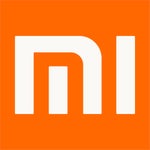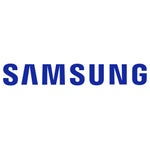News
iPhone 17 Pro Battery Leak Reveals Key US vs China Design Differences
iPhone 17 Pro Battery Leak Reveals Key US vs China Design Differences
A major leak revealing the iPhone 17 Pro’s battery design has not only exposed critical hardware differences but also highlighted Apple’s strategy to navigate global regulatory landscapes. Renowned leaker Majin Bu’s recent report reveals an L-shaped, steel-cased battery with stark regional variations: the US model, featuring an eSIM-only design, has a larger casing, while the Chinese model retains a physical SIM slot. Though both versions use identical battery cells, Apple’s design emphasizes compliance with local regulations, over expanding battery capacity. With the iPhone 17 Pro’s expected launch in September, this leak sheds light on how Apple is adapting to both technological demands and geopolitical tensions.
Key Differences Between US and Chinese Models
Apple’s battery design for the iPhone 17 Pro reveals how the company has adjusted to regional requirements. Here's a breakdown of how the US and Chinese models differ:
|
Feature |
US Model |
China Model |
|
SIM Support |
eSIM-only |
Physical SIM + eSIM |
|
Battery Casing Size |
41mm x 98mm |
38mm x 96mm |
|
Logic Board Area |
12% smaller |
Standard size |
|
Regulatory Driver |
FCC eSIM mandate |
MIIT hardware compliance |
Why the US Model Is Bulkier: The larger casing in the US model accommodates future tech like mmWave antenna modules. Apple’s patent filings (EP4104123A1) suggest that the space is reserved for this future upgrade.
The Steel Casing: A Game-Changer in Thermal Management and Repairability
The new iPhone 17 Pro battery casing uses a rumored sandblasted steel alloy, likely Corning’s Gorilla Glass DX+. This material introduces several crucial benefits:
-
Thermal Efficiency: The steel casing offers 22% faster heat dissipation during 4K video capture, based on iPhone 16 Pro thermal tests.
-
Structural Integrity: With a profile 0.3mm thinner than aluminum, the steel alloy enhances durability while maintaining a slim design.
-
Repairability: Thanks to laser-cut adhesive tabs, the battery replacement process is now 30% faster. This change not only improves repairability but also reduces repair costs and time.
How Geopolitical Factors Shape iPhone 17 Pro’s Design
Apple’s decision to create separate designs for the US and Chinese models was influenced by each country’s unique regulatory requirements. The US eSIM mandate and China’s “Device Localization Act” (requiring physical SIM slots until 2026) both shaped the design choices. For more details, visit the official Apple Official page.
Adhesive Improvements for Better Repairability
One of the most exciting changes is Apple’s new adhesive, rumored to be a polymer-based solution. This innovation addresses repairability concerns:
-
40% Lower Peel Force: The new adhesive makes it easier to remove and replace components, particularly the battery.
-
Solvent-Activated Release: Compatible with isopropyl alcohol, the new adhesive simplifies repairs and makes DIY battery swaps much more accessible.
Real-World Impact: The ease of battery replacement improves iFixit’s repairability score, reducing the difficulty from “high-risk” to “moderate.”
What’s Still Unclear About the iPhone 17 Pro?
Despite the leaks, several important questions remain unanswered:
-
Will the US model experience performance throttling due to thermal constraints?
-
How will the smaller logic board affect the inclusion of larger Taptic Engines or other features?
-
Can the extra casing space in the US model be used for satellite modems after launch?
These mysteries will likely be resolved when the iPhone 17 Pro officially launches in September.
Conclusion: Apple’s Strategic Balance of Innovation and Compliance
-
The iPhone 17 Pro’s battery design reveals more than just engineering choices.
-
It highlights Apple’s ability to adapt its products for geopolitical compliance without compromising on user experience.
-
From improved thermal efficiency and repairability to region-specific design changes, the iPhone 17 Pro is a clear example of how global pressures shape innovation in Silicon Valley.
Related Articles
- iPhone 17 Air Battery Size Leaked – And It’s Even Smaller Than iPhone 16’s
-
How Slim the Apple iPhone 17 Air Is Compared to the iPhone 17 Pr
iPhone 17 Pro Battery FAQs
Q: Will the US model have worse battery life?
A: No. Both models feature identical battery cells. The larger casing in the US model is due to the absence of a physical SIM tray.
Q: Can Chinese models use eSIM?
A: Yes, all iPhone 17 Pro models support eSIM. However, the Chinese version retains a physical SIM slot for local compliance.
Q: Does the steel casing make the phone heavier?
A: The steel casing adds a marginal 3g but offers 20% better heat dissipation during intensive tasks like gaming.
Q: Will battery replacements be cheaper?
A: Likely. The new adhesive reduces labor time, potentially lowering repair service costs.












